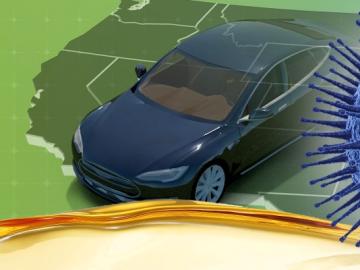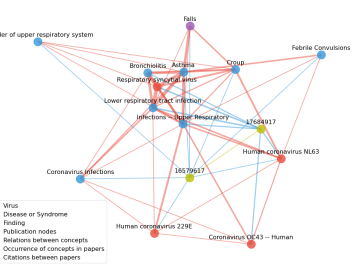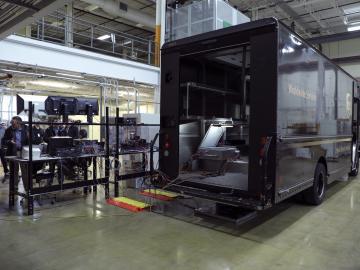
Filter News
Area of Research
- (-) Energy Science (64)
- (-) Supercomputing (37)
- Biological Systems (1)
- Biology and Environment (25)
- Computational Biology (2)
- Computational Engineering (1)
- Computer Science (4)
- Fusion and Fission (4)
- Isotopes (5)
- Materials (27)
- Materials for Computing (6)
- National Security (16)
- Neutron Science (17)
- Nuclear Science and Technology (1)
- Quantum information Science (1)
- Transportation Systems (2)
News Type
News Topics
- (-) Artificial Intelligence (25)
- (-) Biomedical (14)
- (-) Cybersecurity (7)
- (-) Mercury (2)
- (-) Polymers (8)
- (-) Security (4)
- (-) Transportation (50)
- 3-D Printing/Advanced Manufacturing (49)
- Advanced Reactors (3)
- Big Data (22)
- Bioenergy (14)
- Biology (12)
- Biotechnology (3)
- Buildings (28)
- Chemical Sciences (6)
- Clean Water (7)
- Composites (11)
- Computer Science (73)
- Coronavirus (17)
- Critical Materials (8)
- Energy Storage (45)
- Environment (48)
- Exascale Computing (17)
- Fossil Energy (1)
- Frontier (18)
- Fusion (1)
- Grid (29)
- High-Performance Computing (28)
- Hydropower (3)
- Isotopes (1)
- Machine Learning (11)
- Materials (22)
- Materials Science (23)
- Mathematics (4)
- Microelectronics (1)
- Microscopy (6)
- Nanotechnology (8)
- National Security (4)
- Neutron Science (9)
- Nuclear Energy (6)
- Partnerships (4)
- Physics (4)
- Quantum Computing (15)
- Quantum Science (15)
- Simulation (14)
- Software (1)
- Space Exploration (5)
- Statistics (1)
- Summit (29)
Media Contacts

Scientists from Oak Ridge National Laboratory used high-performance computing to create protein models that helped reveal how the outer membrane is tethered to the cell membrane in certain bacteria.

Soteria Battery Innovation Group has exclusively licensed and optioned a technology developed by Oak Ridge National Laboratory designed to eliminate thermal runaway in lithium ion batteries due to mechanical damage.

Scientists at Oak Ridge National Laboratory used new techniques to create a composite that increases the electrical current capacity of copper wires, providing a new material that can be scaled for use in ultra-efficient, power-dense electric vehicle traction motors.

Oak Ridge National Laboratory scientists have discovered a cost-effective way to significantly improve the mechanical performance of common polymer nanocomposite materials.

Oak Ridge National Laboratory researchers have developed a machine learning model that could help predict the impact pandemics such as COVID-19 have on fuel demand in the United States.

From materials science and earth system modeling to quantum information science and cybersecurity, experts in many fields run simulations and conduct experiments to collect the abundance of data necessary for scientific progress.

Ada Sedova’s journey to Oak Ridge National Laboratory has taken her on the path from pre-med studies in college to an accelerated graduate career in mathematics and biophysics and now to the intersection of computational science and biology

Scientists have tapped the immense power of the Summit supercomputer at Oak Ridge National Laboratory to comb through millions of medical journal articles to identify potential vaccines, drugs and effective measures that could suppress or stop the

Oak Ridge National Laboratory researchers have developed a thin film, highly conductive solid-state electrolyte made of a polymer and ceramic-based composite for lithium metal batteries.

Researchers at Oak Ridge National Laboratory demonstrated a 20-kilowatt bi-directional wireless charging system on a UPS plug-in hybrid electric delivery truck, advancing the technology to a larger class of vehicles and enabling a new energy storage method for fleet owners and their facilities.


